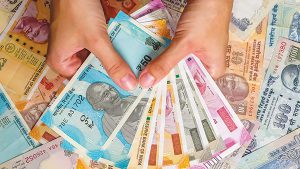Bloomberg
India’s central bank mounted a fresh defense of the beleaguered rupee, announcing a raft of measures to boost
foreign-exchange inflows, that analysts said may not immediately result in large capital flows.
The steps include doubling borrowing limits for companies from overseas to $1.5 billion during a financial year, temporarily removing any interest-rate ceiling for banks to attract deposits from non-residents, and liberalising rules for foreigners to invest in local-currency bonds, the Reserve Bank of India (RBI) said in a statement. The rupee gained.
“The measures announced are fundamentally good steps to attract capital, but may take some time to have an impact as the pressure on the rupee is coming from the large sticky current-account deficit, and not just capital outflows,†said Rahul Bajoria, chief India economist at Barclays Plc in Mumbai.
The rupee has slumped to a series of record lows in recent weeks, underscoring the economic challenges faced by the authorities as inflation accelerates and external finances worsen. The new rules will help “further diversify and expand the sources of forex funding so as to mitigate volatility and dampen global spillovers,†the central bank said.
“The RBI has returned its focus to boost dollar inflows to offset a widening current account shortfall and ease onshore dollar tightness,†said Radhika Rao, senior economist at DBS Bank in Singapore. The incremental flows could be absorbed to replenish the foreign exchange reserves, she said.
The announcement came just days after the federal government raised import duties on gold and increased levies on exports of gasoline and diesel in an attempt to control
the rapidly-widening current account gap.
The rupee rose as much as 0.5% to 78.90 to a dollar on Thursday. Sovereign bonds were trading steady amid higher US yields. The benchmark 10-year bond yield was little changed at 7.30%.
The Indian currency has weakened nearly 6% this year, putting it on the threshold of 80 per dollar for the first time, as fears of a potential global recession fuel outflows from emerging markets. The rupee has also been punished as spiralling oil prices widen India’s trade deficit to a record, and outflows from equities.
“The Reserve Bank has been closely and continuously monitoring the liquidity conditions in the forex market and has stepped in as needed to alleviate dollar tightness,†it said. The central bank has been intervening in foreign-exchange markets on a regular basis, with Barclays Plc estimating it has spent more than $40 billion to defend the rupee since February.
“These measures, while having a slight sense of deja vu from 2013, are still proactive, rather than the reactive measures taken back then,†said Madhavi Arora, chief economist at Emkay Global Financial Services Ltd. in Mumbai. “While it is debatable if these steps can lead to significant flows, they could be effective in preventing speculative attacks on the currency and giving directional policy signals to the markets.â€
 The Gulf Time Newspaper One of the finest business newspapers in the UAE brought to you by our professional writers and editors.
The Gulf Time Newspaper One of the finest business newspapers in the UAE brought to you by our professional writers and editors.
